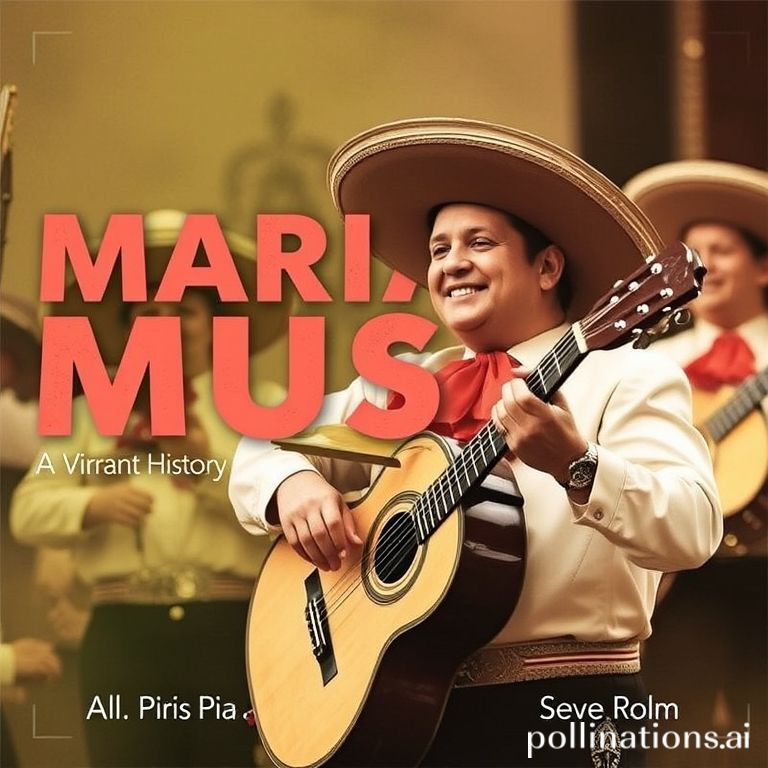Mariachi music is more than just a genre; it’s a vibrant symbol of Mexican culture, history, and national identity. The spirited sounds of trumpets, violins, guitars, and the heartfelt vocals instantly evoke images of colorful costumes, festive celebrations, and a deep connection to tradition. From humble beginnings to international recognition, the history of mariachi music is a fascinating journey through the heart and soul of Mexico.
Understanding the evolution of mariachi music provides a deeper appreciation for its artistic richness and its significance in shaping Mexican cultural heritage. So, let’s embark on a musical journey to explore the origins, transformations, and enduring legacy of this iconic Mexican art form.
Origins and Early Development
The precise origins of mariachi music are shrouded in some mystery, but most historians trace its roots back to the western Mexican state of Jalisco in the 19th century. The music emerged from the blending of indigenous musical traditions with Spanish influences introduced during the colonial period. Indigenous instruments were gradually replaced or adapted to include European stringed instruments like the violin, guitar, and harp.
Early mariachi groups were primarily folk ensembles, performing at local celebrations, religious festivals, and social gatherings. These groups often consisted of farmers and laborers who played music in their spare time. Their repertoire included sones (a type of folk song), jarabes (dance tunes), and other regional musical forms. These early mariachi performances were a raw and passionate expression of the people’s lives and experiences.
The Role of “Son” Music
A crucial element in the development of mariachi was the “son” tradition. “Son” is a broad category of Mexican folk music characterized by its rhythmic complexity, improvisational nature, and lyrical themes centered around love, nature, and everyday life. Different regions of Mexico developed their own distinct styles of “son,” and the “son jaliscience” from Jalisco became a foundational element of mariachi music.
The instruments and performance practices of “son jaliscience” gradually evolved into what we recognize today as traditional mariachi. The combination of stringed instruments, rhythmic strumming patterns, and impassioned vocals created a unique and compelling sound that resonated with audiences across the region.
The 20th Century: Transformation and Popularization
The 20th century brought significant changes to mariachi music, transforming it from a regional folk tradition into a nationally and internationally recognized art form. Several key factors contributed to this transformation.
The Influence of Radio and Recordings
The advent of radio broadcasting and recording technology played a crucial role in popularizing mariachi music. In the early decades of the 20th century, mariachi groups began to be featured on radio programs, reaching wider audiences than ever before. Recordings allowed people to enjoy mariachi music in their homes, further spreading its popularity. Mariachi Vargas de Tecalitlán, founded in the late 19th century, became one of the most influential mariachi groups of this era, thanks to their radio performances and recordings.
Mariachi in Film
Mexican cinema also played a vital role in promoting mariachi music. During the Golden Age of Mexican Cinema (1930s-1960s), mariachi musicians and music were frequently featured in films, often portraying idealized images of Mexican culture and identity. Actors like Jorge Negrete and Pedro Infante, who were also talented singers, helped to solidify the image of the charro-suited mariachi as a symbol of Mexican masculinity and pride.
The Rise of the Modern Mariachi Ensemble
Over time, the instrumentation of mariachi ensembles became standardized. The traditional lineup typically includes:
- Violins (usually two or more)
- Trumpets (typically two)
- Guitarrón (a large, bass guitar-like instrument)
- Vihuela (a small, five-string guitar)
- Guitar
- Vocals
The charro suit, with its ornate embroidery and wide-brimmed sombrero, also became the standard attire for mariachi musicians, further enhancing their visual appeal and reinforcing their association with Mexican tradition.
Mariachi Today: A Living Tradition
Today, mariachi music continues to thrive in Mexico and around the world. It is performed at weddings, quinceañeras, birthdays, and other celebrations. Mariachi groups tour internationally, sharing their music and culture with diverse audiences. Mariachi music has also influenced other musical genres, and elements of mariachi can be heard in contemporary pop, rock, and Latin music.
UNESCO Recognition
In 2011, UNESCO recognized mariachi as an Intangible Cultural Heritage of Humanity, further solidifying its importance as a cultural treasure. This recognition acknowledges the vital role that mariachi plays in preserving and promoting Mexican identity and tradition.
The Future of Mariachi
While rooted in tradition, mariachi music continues to evolve and adapt to contemporary tastes. New generations of musicians are pushing the boundaries of the genre, incorporating new instruments, arrangements, and lyrical themes. Mariachi education programs are helping to ensure that the tradition is passed on to future generations, preserving its rich history and vibrant spirit.
Conclusion
The history of mariachi music is a testament to the power of cultural expression and the enduring appeal of tradition. From its humble beginnings in the fields of Jalisco to its current status as a global icon, mariachi music has captivated hearts and minds with its spirited melodies, heartfelt lyrics, and vibrant cultural symbolism. As long as there are celebrations to be had and stories to be told, mariachi music will continue to resonate as a powerful and enduring symbol of Mexican identity.
If you enjoyed this article, don’t forget to explore more inspiring stories on Life in Mexico!
IMAGE: A vibrant and colorful scene depicting a mariachi band performing in a traditional Mexican plaza. The musicians are dressed in ornate charro suits with wide-brimmed sombreros, playing violins, trumpets, guitars, and a guitarrón. The plaza is filled with people celebrating, with colorful decorations and streamers adding to the festive atmosphere. The lighting is warm and golden, creating a joyful and celebratory mood. The style is realistic and captures the cultural richness of the scene.


